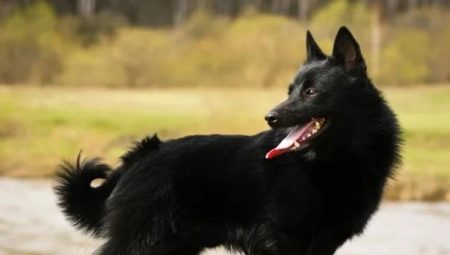Schipperke is considered a shepherd dog or a miniature shepherd. Among the breeders of these animals, it is in special demand. Despite the fact that it is not suitable for hunting in the classical sense, the scipperper perfectly catches small rodents, rabbits and moles. The material in this article will introduce readers to the description of the breed, the history of the origin of these dogs, the nuances of their character and the main aspects of the content.
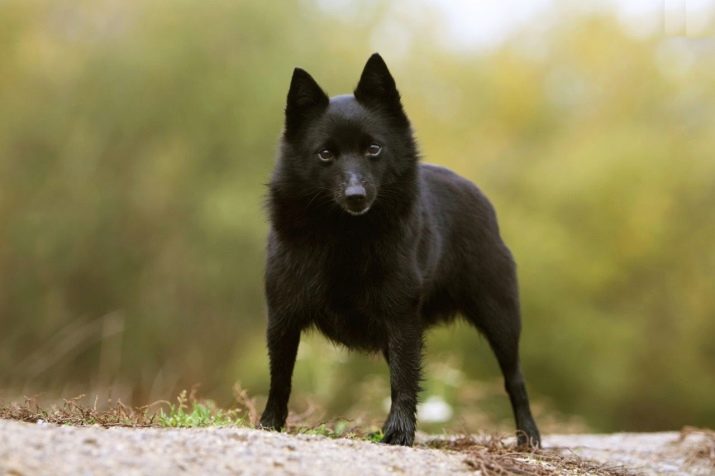
Origin history
From the Flemish dialect, schipperke is translated as “little boatman” or “shepherdess”. Some dog handlers believe that the interpretation of “miniature shepherd” is a more correct translation. Most likely, the ancestors of the dog bred in Belgium are the so-called Leuvenars, which are small black dogs. Someone attributed the animals to Spitz, at home they were considered shepherds.
The story of the emergence of small shepherds dates back to the XIV century, when the French, the ruling in Belgium, passed a law banning the maintenance of large dogs to all residents except aristocrats. This explains the breeding of leuvenars, from which the evolution of Schipperke began. The townspeople had to have dogs, which were supposed to perform the same security functions as large dogs.
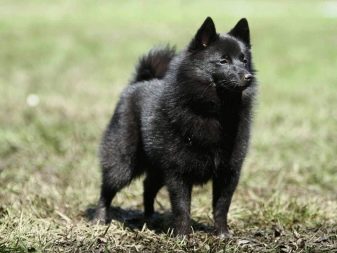
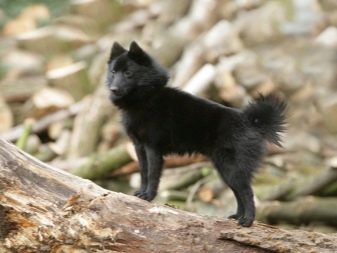
In the 15th century, the French were supplanted by the Spaniards. At that time, there were many small dogs in Belgium. They perfectly caught rats and mice, and also coped with the protection of houses and pastures. In the XVI century, people began to pay attention to improving the characteristics of dogs, although official recognition came later.Despite the fact that by this time there were two types of Belgian shepherd dogs (large and small), it was miniature dogs that people liked more.
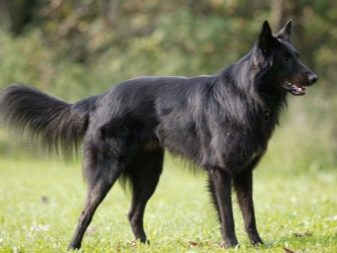
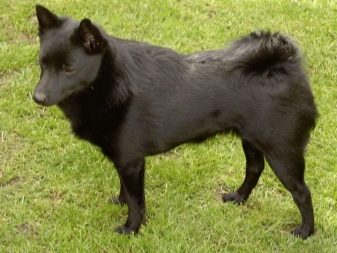
Over time, their large gather came under the ban, which began to be practiced in Europe. Schipperke began to spread throughout the mainland. The first standard for the breed was developed in 1882, along with official recognition. However, in the formation of the breed there was also a turning point when the puppies were exported to the UK.
The fact that the members of the royal family liked the dogs served as the beginning of a boom on a shipper. And to know, it was not so much worried about the thoroughbred pet that they acquired, but the mandatory requirements: black color, lack of tail and country of origin. It was extremely important for them to bring puppies from Belgium. At this time, the Belgians created the first club of the breed. The breeding of exactly black dogs began, its control at all stages of development, thanks to which today dogs look almost the same as during the period of fashion peak.
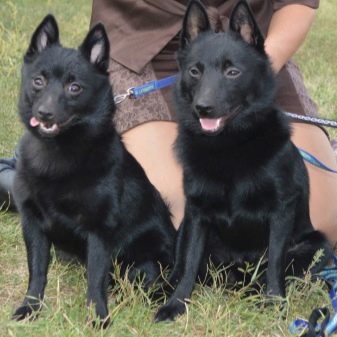
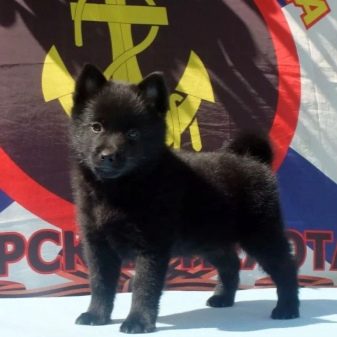
However, during the period of hostilities, the number of nippers was significantly reduced. Due to the fact that dogs were spread across the ocean, after the war, the breed was restored and bred without the involvement of dogs of other breeds. Despite the fact that this breed is not in demand in some countries, extinction today does not threaten her. However, the climatic background of a particular region can leave its mark on the life span of an individual.
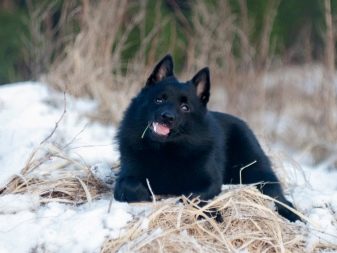
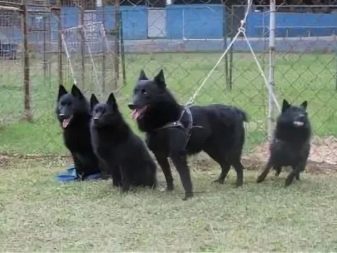
Breed characteristics
The description of Schipperke is somewhat similar to the description of Spitz, not related to dwarf decorative breeds. However, shepherd dogs have their own differences. Outwardly, they are quite cute, quite harmoniously folded and are characterized by a triple layer of black wool, which is why these animals are not afraid of the cold. Their fur coat is quite warm, fluffy and thick. Dogs are sexually different. Based on this, they have different heights and weights, and there are differences in body proportions.

For its type, the dog is quite powerful, the weight of males on average is 8–9 kg, while females weigh between 5–8 kg. As a rule, the height at the withers of representatives of this breed is comparable to the length of the body.
In males, it averages 32–33 cm, the height of bitches does not exceed 31 cm. The snipper's head is not long, but wide, its shape is wedge-shaped. The forehead is broad, the upper lines of the muzzle and skull are parallel. Schipperke's muzzle is shorter than the skull and usually does not exceed half the length of the head. The type of muzzle is compact, neat, it narrows to the nose, lips of the representative of the breed are dense, cheeks and cheekbones are full.
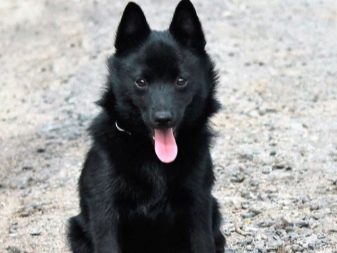
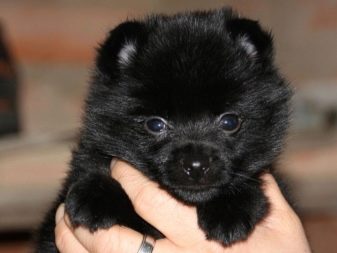
The shape of the eyes of these dogs is almond-shaped, their iris is brown in color, and the size is relatively small. They are set shallow, have no bulge, their stroke is always dark. Schipperke's ears are small, their staging is vertical, they are erect.
The nose is small, always black. Cheekbones and superciliary arches are somewhat convex, but moderately developed, they are clean and smoothly pass into the muzzle. The dog’s bite is regular, scissor-like, but may be straight, the standard allows for incomplete filling. For example, an individual representative of the breed may not have a third or second molar. In other dogs, an incomplete formula is the absence of the first premolars. The teeth themselves are quite strong, have a good setting in the jaws.
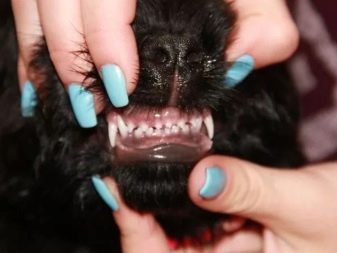
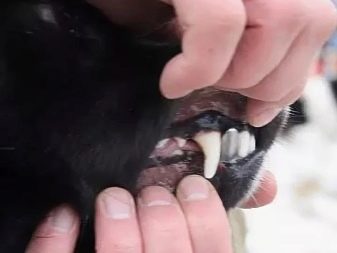
The chest of the schipperke is lowered to the elbows, the body is proportional, although to some it may seem wide and stocky. The physique tends to a square shape, the neck is strong and powerful, muscular. Due to the voluminous woolen collar, she seems thick, her upper line is somewhat curved.
The withers of the schipperke are expressive, due to the dense mane, it is especially noticeable in males. The back is straight, powerful, the lower back is strong, the croup is broad, its back is rounded.The lower line of the body is lowered from the front of the chest to the elbows and raised to the stomach. The stomach itself is not sagging and not sunken.

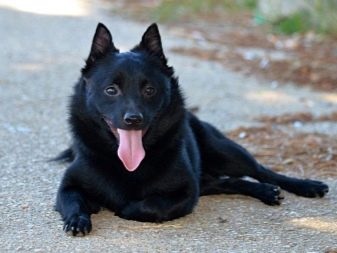
The dog has a high tail landing. When the animal is calm, it can reach the hocks, and also hang down with a slightly curved end. When the dog moves, it rises to the top line (usually not higher). Also, the standard does not prohibit it from being twisted or thrown back. Sometimes puppies of this breed are born tailless or may have a rudimentary (shortened) tail.
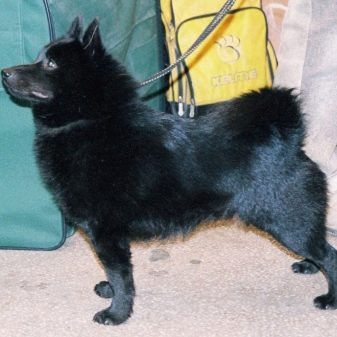
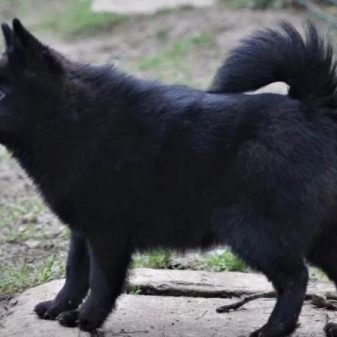
The standard does not limit this feature and allows dogs with tails of three types to be displayed. However, in a number of European countries, stopping is prohibited, therefore it is unacceptable to lead a dog without a tail to such an event. According to the regulated standard established by the International Cynological Federation, the color of dogs must be exclusively black. In England, it can be golden; in America, colors such as chocolate, bluish and black with tan are allowed.
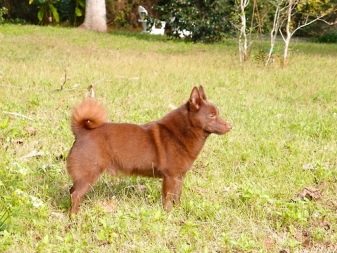
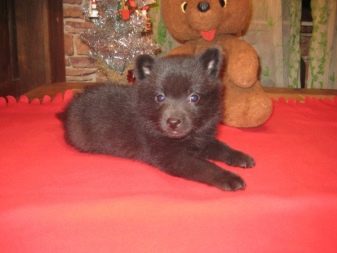
As for the limbs, they are parallel, the length of the forelegs from the ground to the elbows is comparable to half the height of the animal at the withers. The hind legs are located under the body, due to the tows seem wide. They are slightly longer than the front, have short, but strong claws. The skin of animals is smooth, the skin fits tightly on the body. The coat of the smallest shepherd is characterized by an abundance of outer hair. They are straight, coarse, thick and seem dry to the touch.
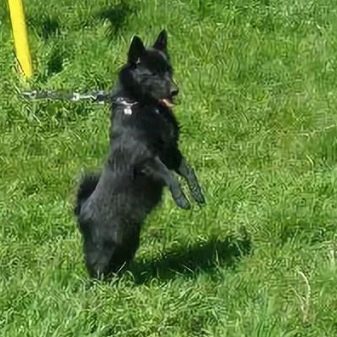
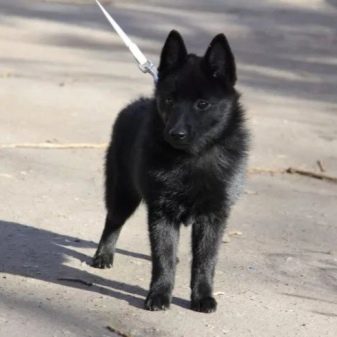
The undercoat of a dog's fur coat is soft and dense, in the area of the ears, head, and metatarsus, the length of the coat is less. On the back of the thighs are covered with long hair, due to which the visual effect of the pants is created.
Nature and behavior
Mini-shepherds only outwardly seem cute pretty. At heart, these animals feel like full-fledged guard shepherds. They are characterized by decisiveness and courage, therefore they are completely unaware of fear and are always ready to protect their masters and the territory entrusted to them. In view of its static they need an energetic hostwhich will share their craving for movement and activity. Dogs are unrealistically energetic and cheerful, which is why they can be called positive generators.
These are great companions.who are able to cheer up the owners at the right time. In addition, Schipperke is very curious, they will not sit out their lives in a sunbed or on the master sofa. Movement is the credo of their life, it is important for them to constantly research something.
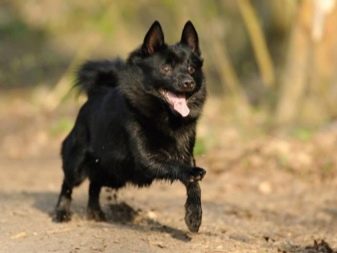
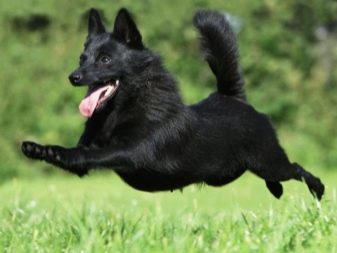
They are ready to devote a considerable part of their time and attention to the owners. This feature is used by breeders to train and raise mini-shepherds, and dogs love playing in a playful way. They also love to play with children, are able to become partners with sports breeders, and they travel well. During a period of fatigue, they can rest on their master's lap, although the rest time for them, unlike cats, does not last long.
However, a mimicry appearance can deceive an inexperienced breeder, because a dog of this breed, like classic shepherd dogs, is able to take a leadership position in the house. Her dominance in the house can completely change the usual rhythm of life, in view of which the owner must be persistent and persistent in training. As a rule, such dogs It is not recommended to start weak-minded people who lower the education of pets to their own course.
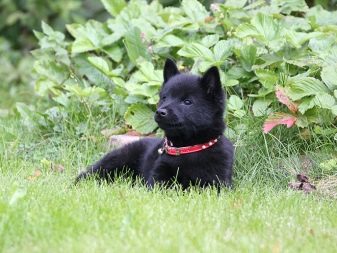
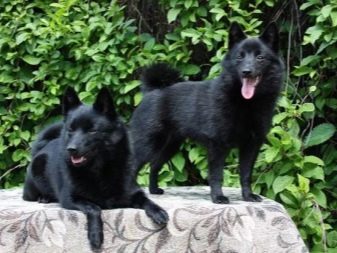
Schipperke can live both in an apartment and in a private house. Of course, the individual living in the house is more developed, since he has more opportunities for walking and communicating with the owner. The nature and habits of the animal are completely dependent on how well he was raised. This explains the difference in the behavior of dogs of the same breed. A pet can be affectionate and calm, cheerful and responsible.
With the right approach to training he will be betrayed not only to one owner, but will be able to take for “his” all households. An untrained dog can bark for a long time and incessantly, which is bad if the pet lives in an apartment building, as this can affect relations with neighbors, or even harm them (for example, it is bad if a person suffering from migraine lives behind the wall).
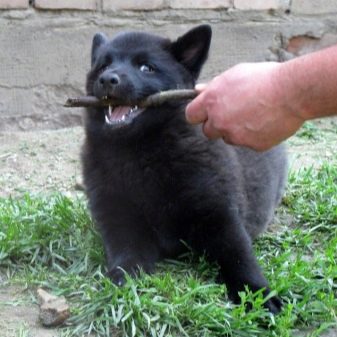
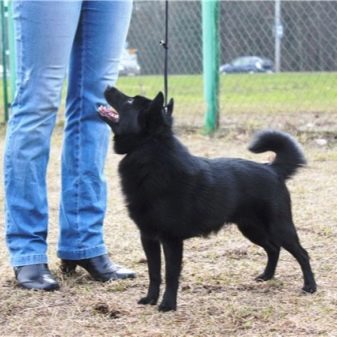
A trained animal does not allow itself an extra demonstration of voice. However, regardless of the upbringing, Schipperke painfully suffers a change of residence, as well as a change of owner. The dog is suspicious of strangers and strangers. However, he builds his attitude to some of them on the basis of relationships with these people of his master.
Due to the presence of a thick and warm coat, a dog of this breed can live both in the house and on the street in an aviary or a booth. At the same time, as experienced breeders note, one look at the pet is enough to understand where it lives. The dog living on the street has a richer and thicker coat. The undercoat of such a fur coat is denser, the wool seems fluffier than the brothers who are kept in the house or apartment.
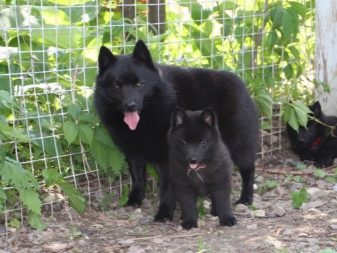
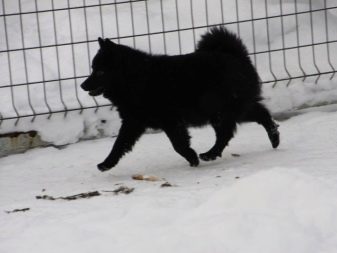
These dogs tend not to show their attitude towards individuals. If in one family they adore children, then other breeders note that their pets are not asking for friendship with children. In some cases, if the child bothers them, they prefer to go to other rooms at home. Poorly trained animals can bark at unfamiliar children or show aggression towards them.
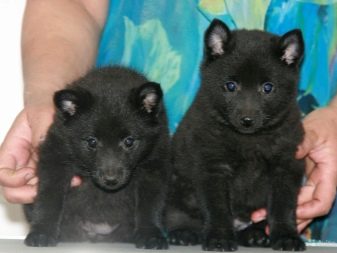
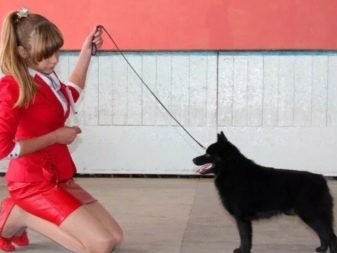
Advantages and disadvantages
Schipperke has both advantages and disadvantages. To some, the dog may seem moody and overly active. However, before you take such a puppy, you need to weigh your chances: this dog is completely unsuitable for the lazy owner, who will shift the upbringing and training of the pet day after day. The breeders also like the size of the pets, which is why these animals can be accommodated even in small apartments. Some of them can even be carried in your hands and taken on a trip where they do not cause much trouble to the owners.
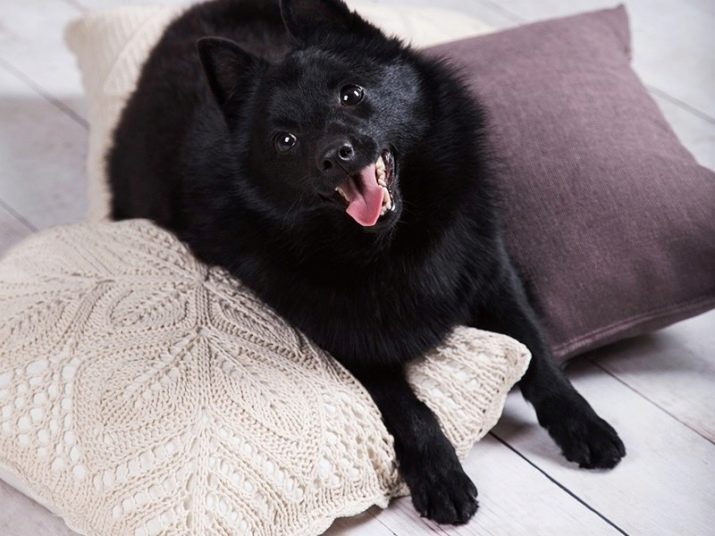
As for the shortcomings, then they can be attributed alopecia, an autoimmune disease. It manifests itself in the form of bald patches on the skin, and with this disease, there may be relapses. This is due to various nuances, including the state of immunity. The pluses of the representatives of the breed include, in addition to size, intelligence and devotion. For his master, Schipperke is ready to jump "into fire and water."
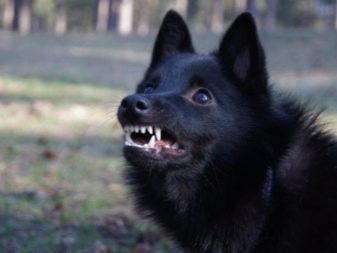
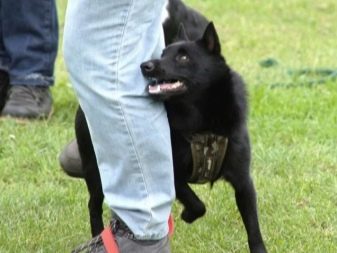
Among the shortcomings can be identified the cost of purebred puppies. Their price on average is about 80,000 rubles for a baby of three months of age. And also do not neglect the considerable amount of time that will have to be devoted to the dog in the process of training and care. In fact, the appearance of a puppy in the house can significantly change the usual daily routine.
How to choose a puppy?
Nowadays, due to the frequent cases of sale of non-purebred dogs, it is difficult for an unenlightened buyer to understand how and where to buy a purebred dog. You should not do this in a hurry, without meeting the breeder closely, without having complete information about him. As a rule, the risk of buying a non-purebred individual in official nurseries, where breeders care about their own reputation, is less likely.
In these places, the buyer acquires puppies with the necessary documents (pedigree and veterinary passport). The more pedigree ancestors the baby has, the better. An experienced breeder can introduce a potential buyer to other buyers, the nuances of grooming and keeping a pet. Usually, the buyer purchases a puppy in the kennel who is already vaccinated and has the first rudiments of socialization.
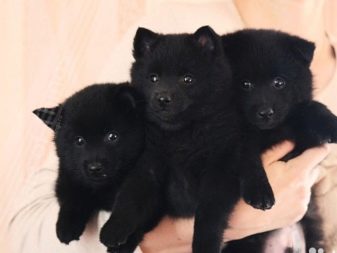
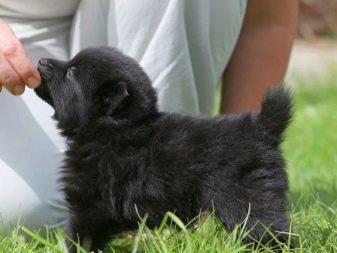
To have an idea of the standard, ahead of the purchase you need to look at the nuances of the standard. If they don’t say much to the buyer, you can invite a specialist who will examine the puppy you like, look into his mouth, examine his teeth, ears, evaluate the type of physique, determine the quality of the conditions of detention and the likelihood of risks of certain diseases. The chosen puppy should be moderately active and developed.
You should not take a baby who is lying more than moving, and also does not show any interest in the future owner. It is important to pay attention to the setting of paws, correct gait, moderate fatness, good appetite. The health indicator for these puppies is activity: if it is lowered, the puppy is sick.
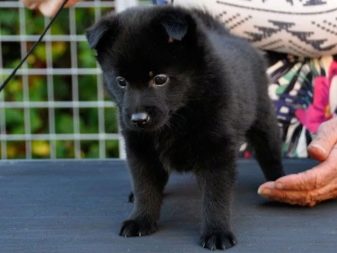

Maintenance and care
Regardless of whether the pet lives on the street or at home, it can not be locked for a whole day in the apartment or in the aviary. This is not a decorative, but a working breed of dog, so the animal needs daily walks and training. Representatives of this breed need to recognize their own usefulness. Otherwise, they will find classes for themselves, and not always good ones. For example, to wake up the owners with a loud bark, to put things in order in cabinets, in the kitchen and in other rooms of the dwelling.
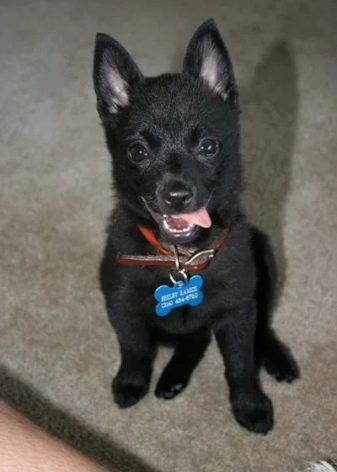
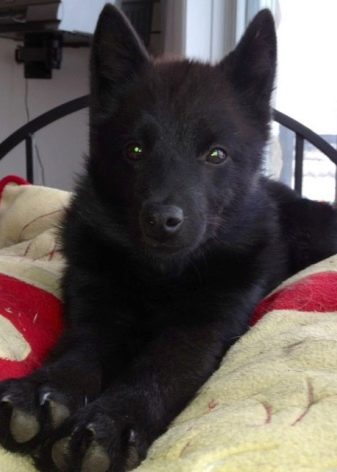
A trained animal will not allow itself to spin underfoot. It can be kept without much trouble in the winter on the street. These dogs adore the snow, in addition, they tolerate heat well. However, regardless of their age and gender, the breeder will be forced to constantly monitor the condition of their coat. It is especially important to deal with it during the period of seasonal molts, since the undercoat typed during the winter often remains on the spine, which leads to the formation of tangles.
Shedding of these dogs lasts an average of two weeks, at the same time, to eliminate dead hair, you need to use both single-row and slicker. On other days, to maintain the aesthetic appeal of the dog coat just comb it a couple of times a week with a massage brush.
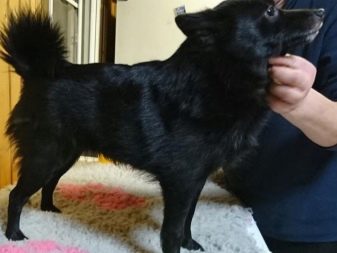
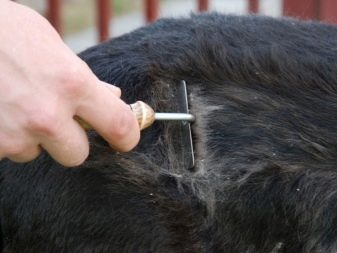
If desired, you can buy a furminator for the animal, through which the owner can quickly and painlessly remove dead hair from the fur coat.
The coat of a well-groomed dog is shiny and strong. Her skin is not prone to allergies and drying out. If the owner has noticed the excess hair loss from a fur coat, this indicates malnutrition and the need to consult a veterinarian.
Schipperke does not need to bathe too often, even if the owner thinks that the dog should be perfectly clean. The working dog, as a rule, has a rough and straight coat, which is why it is not prone to collecting and accumulating dirt. For dogs participating in exhibitions, breeders buy special shampoos for black wool. With their help, they mask the rust that appears in pets during prolonged exposure to the sun. Bathing a pet is not more than once every two months.
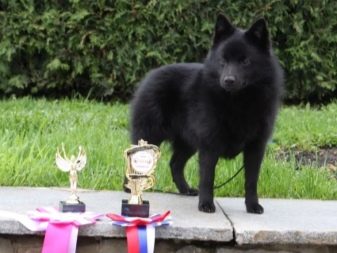
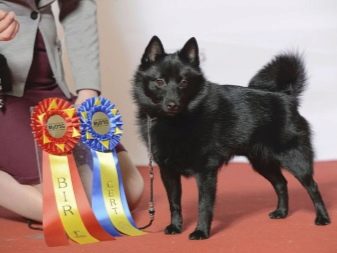
Exhibition animals are washed more often, not forgetting to do it before the exhibition itself, for which they visit the groomer. When washing, it is necessary to use a zoo shampoo for shorthair dogs and a special dog conditioner balm. Experienced breeders wash their paws and genitals after walking. Accustoming to hygiene is part of education. It should be performed from an early age on the dog.
Ears and eyes must be examined constantly; if contaminants are found, they are removed. Sulfur from the ears is removed with a moist cotton pad. If an unpleasant smell coming from the ears is detected, the dog is immediately taken to the veterinarian. Among other signals requiring an urgent visit to the doctor, experts note redness of the skin, swelling, constant scratching of the ears. You can not deal with treatment on your own, because often it worsens the situation.
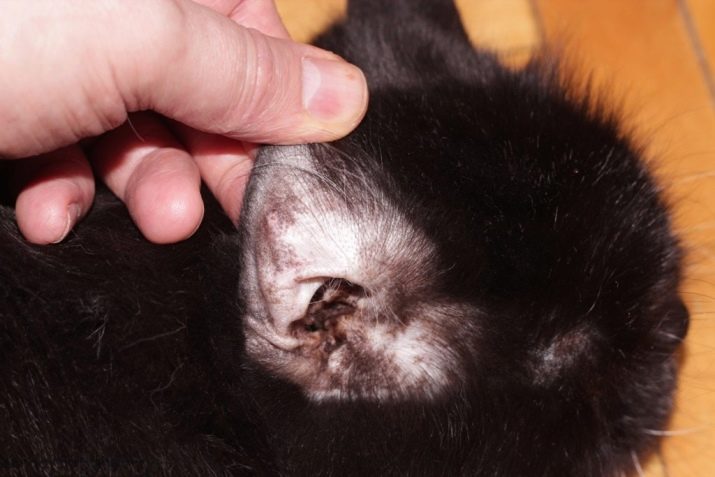
Eyes are examined regularly, in order to prevent souring, they are rubbed once a week with a lint-free cloth soaked in chamomile broth. At the same time, a new rag is taken for each eye.In the presence of redness and sourness, the dog is taken to the veterinarian. The same rule applies when an animal has profuse lacrimation and swelling of the eyelids.
It is advisable not to wipe the paws after each walk with a damp cloth, but to wash. This is better seen, cracks or other wounds appeared on the pads. If they are, they are treated with an antiseptic. To prevent the appearance of cracks, it is necessary to lubricate the paw pads with vegetable oil. In addition, it must be included in a nutritious diet.
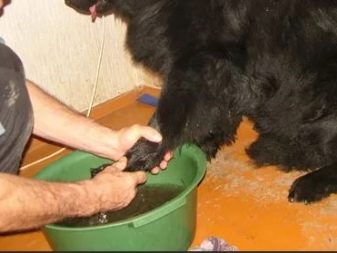

For the treatment of claws, a claw cutter is used, which is used no more than once a week. After cutting off the edges of the claws, they file them with a file, they teach a dog from young claws to such a procedure, encouraging her for patience. Teeth need to clean their pet, otherwise they will quickly become yellowed and wear out. In addition, dirt accumulates between them, which causes the formation of tartar.
You can not use human paste, since dogs do not like the menthol smell and foam. You need to walk the dog every day two or even three times, while the evening walk should be longer. Treatment from worms and other parasites must be carried out in a timely manner. If ticks are found, it is urgent to consult a doctor.
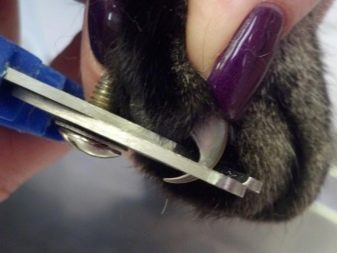
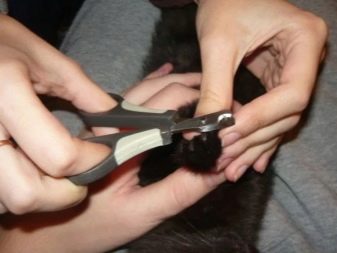
Food
She needs to be fed properly: her food should be balanced, containing vitamins and essential minerals. It is generally accepted that these dogs eat everything that they are given. However, this does not mean that pets from the master's table are suitable for pets. Neither smoked nor fried food is suitable for their feeding, it is harmful to digestion. Natural food and ready-made industrial food are suitable for these dogs. premium (as well as holistic).
When buying ready-made feed, you need to pay attention to its type and class. It is important that it is intended for active dogs, suitable for age and had natural meat in its composition. Cheap feeds do no good and with constant use they irritate the stomach of animals, upset the digestive system.
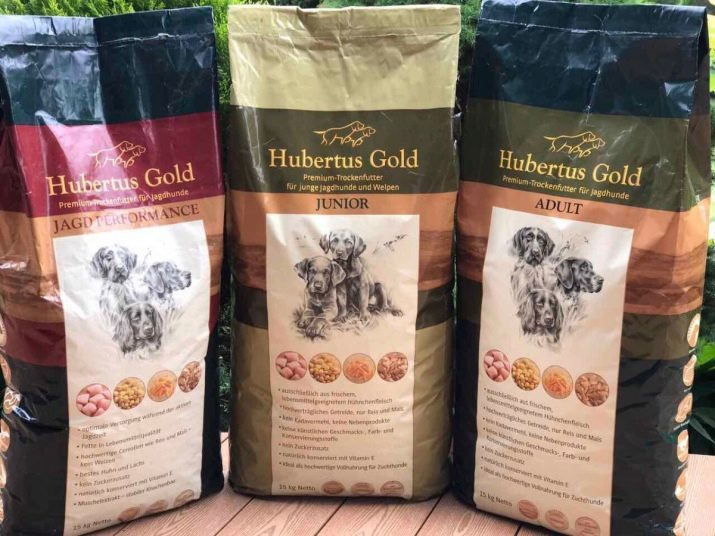
A small puppy is fed about 5-6 times a day. When he turns 2 months old, one feeding is removed. At 4 months, the pet should eat no more than 4–5 times a day. A six-month-old puppy eats even less often: he should not be fed more than 4 times. At 8 months, the pet is fed 3 times a day. An adult dog is even less likely to do it twice a day.
When natural food is chosen as the basis of the diet, the owner monitors its balance and the amount of necessary substances. For example, in the diet should be low-fat meat (boiled or raw), greens, cereals, vegetables, as well as fruits and sea fish (boneless). Both the puppy and the adult dog need kefir and cottage cheese. The list of prohibited products includes smoked meats, river fish, chocolates, nuts, sweets, pastries, seasonings.
A pet, regardless of the time of feeding, should always have a bowl of fresh water in the public domain. Water needs to be changed every day, food should be fresh and non-hot. You need to feed the dog after walking. The feeding time should not exceed 15-20 minutes, after which the leftovers are removed so as not to spoil the pet's appetite.


Parenting and training
Schipperke puppy needs early socialization. The sooner the owner starts his training and education, the more chances he has to raise a faithful friend and reliable companion from the puppy. It is important to understand that this dog will not follow the owner’s commands if it doesn’t interest him, so the approach to training should not be boring and monotonous.
You need to train your pet correctly combining classes with feasible physical activity, which should be regular, which will allow the animal to splash out the excess energy that accumulates during the period of growth and development. Schipperke is one of the most active dog breeds, inaction literally ruins this dog, turning it into an aggressor.If the dog is not busy with anything, it very quickly finds itself in search of conflict, will fight with other pets living in the house, and will rush at the guests.
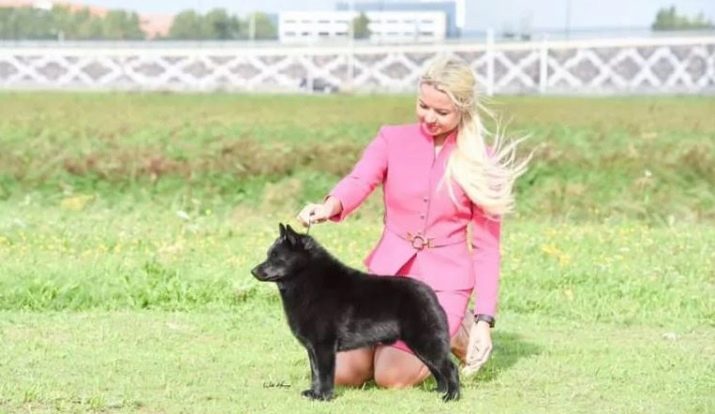
Frisbee, agility, freestyle, offense, outfitting are indispensable games and workouts. You need to train your puppy with commands and rules in the house from the first days of his appearance. It’s worth starting with primitive commands and learning your own nickname. As a rule, this takes a little time, because the baby tries to catch all the attention of the owner, as well as his every gesture. If possible, it is necessary to teach the animal the wisdom of OKD and ZKS.

In addition, training can be diversified by swimming and walking, and you can teach a dog to swim in a variety of ways, including using the “bring” command using a stick. For example, you can find a shallow pond, throw a stick at it so that it falls into the water near the coast. Gradually, the stick can be thrown further, forcing the dog to go further and further into the water. Gradually she will reach the border at which her legs will not touch the bottom. After several commands, the pet can be fooled, splashing in the water.
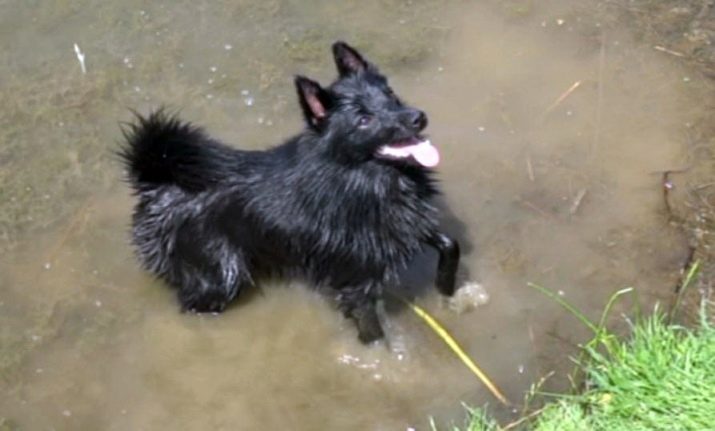
Important! Training should not be exhausting and long, and under no circumstances should they be accompanied by a bossy scream and discontent.
Emotional pressure on the pet is unacceptable: this leads to the fact that the animal begins to behave aggressively. In addition, a dog of this breed does not consider it necessary to obey a screaming person, even if it is its owner. Do not stoop to whipping: Dog lessons should be relaxed and fun. Standard teams need to be diluted with game elements, through which the animal will quickly remember the material studied.
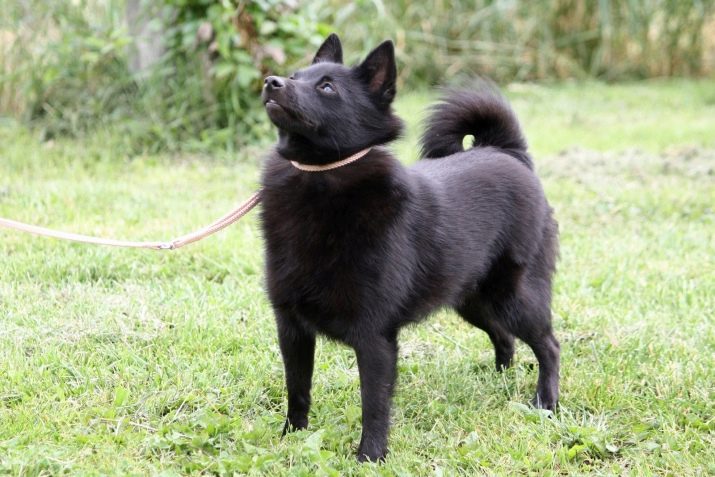
Reviews
Reviews about the shipper are different, which is explained by different opinions of the breeders. Dogs can have a completely different character and temperament. Some of them, according to owners, are very active and inquisitive. Others as they grow older acquire a certain degree, which allows them to be restrained in relation to strangers and children. However, most of the comments left on the World Wide Web indicate that restlessness is characteristic of these dogs.

According to breeders' reviews, Schipperke live on average up to 10-12 years. Moreover, some individuals may have diseases such as diseases of the musculoskeletal system and eye diseases. Other breeders are faced with the fact that dogs begin to limp. This is due to the excessive physical exertion experienced by their dogs. Experienced owners note that the load should be feasible, otherwise it adversely affects the joints.
There are different opinions among the truthful reviews, but most breeders say the need to monitor the health of the dog. Older animals are prone to troubles such as cataracts, epilepsy, retinal atrophy, dysplasia, and thyroid disease.
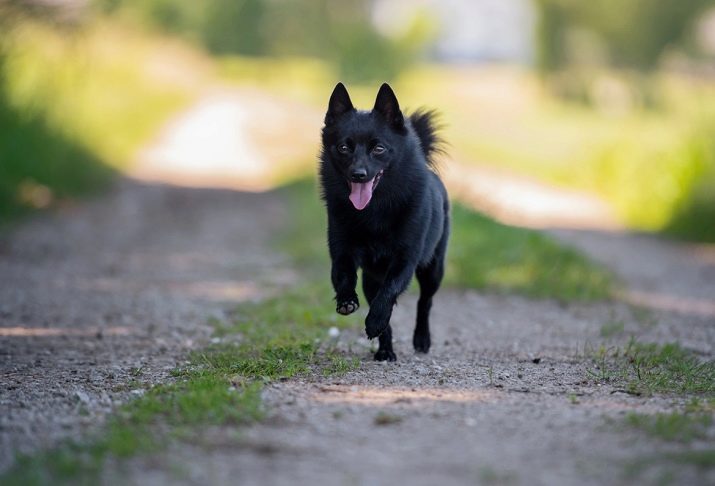
See how to train and care for your shipper in the next video.
